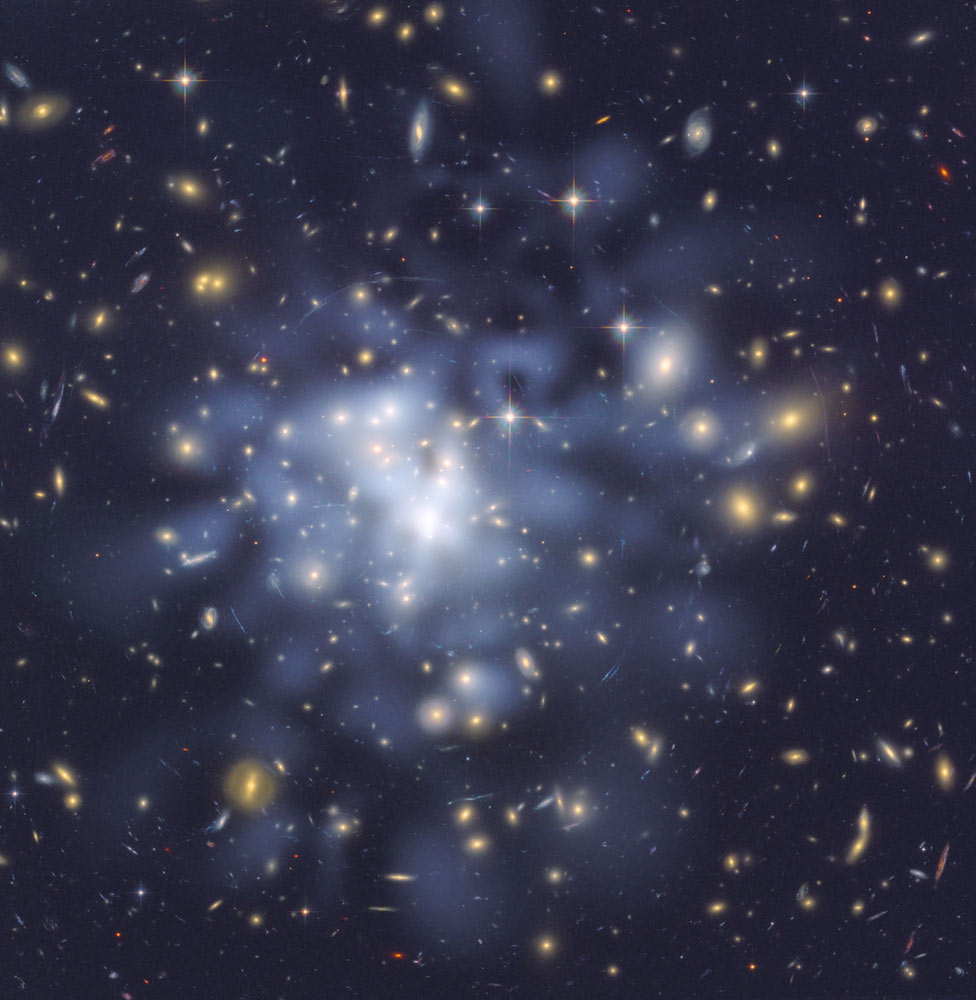We're open daily! View holiday hours
Science News
Seeing Dark Matter
November 15, 2010

Astronomers believe that most of what makes up the Universe is “dark” and invisible.
In broad strokes… We have dark energy, which makes up 73-74% of the Universe and causes the Universe to accelerate in its expansion. Dark matter, on the other hand, makes up 22-23% of the Universe, accounts for most of the mass and exerts gravitational effects on galaxies—influencing the rotational speed, orbital velocity, and distribution of the remaining 4% of the Universe, namely the stuff we can actually see.
But what if you could see the dark stuff? Would the images match up to the theories describing it?
Scientists at NASA/JPL, working with a West Point mathematician and using the Hubble Space Telescope, have created one of the sharpest maps to date of dark matter.
Focusing on a galaxy cluster called Abell 1689, 2.2 billion light years away, the team was able to create a map of dark matter using gravitational lensing.
Abell 1689 contains about 1,000 galaxies and trillions upon trillions of stars. Its gravitational influence, the majority of which results from dark matter, acts like a cosmic magnifying glass, bending and amplifying light from galaxies much farther away. This effect, called gravitational lensing, produces multiple, warped, and greatly magnified images of those galaxies, like the view in a funhouse mirror. By studying the distorted images, astronomers estimated the amount of dark matter within the cluster. If the cluster’s gravity only came from the visible galaxies, the lensing distortions would be much, much weaker.
Researchers used the observed positions of 135 “lensed” images of 42 background galaxies to calculate the location and amount of dark matter in the cluster. They superimposed a map of these inferred dark matter concentrations, tinted blue here, on a Hubble image of the cluster.
According to team leader Dan Coe, “the lensed images are like a big puzzle. Here we have figured out, for the first time, a way to arrange the mass of Abell 1689 such that it lenses all of these background galaxies to their observed positions.”
The new dark matter observations may yield new insights into the role of dark energy in the Universe’s early formative years.
Will the theories prove correct? From Discover’s Cosmic Variance blog:
We have theoretical predictions about how dark matter should act, and it’s good to compare them to data. Interestingly, the fit to our favorite models is not perfect; this cluster, and a few others like it, are more dense in a central core region than simple theories predict. This is an opportunity to learn something — perhaps clusters started to form earlier in the history of the Universe than we thought, or perhaps there’s something new in the physics of dark matter that we have to start taking into account.
Astronomers will use the new “dark” map to shed light on how the Universe has evolved in the past—and will continue to evolve in the future.